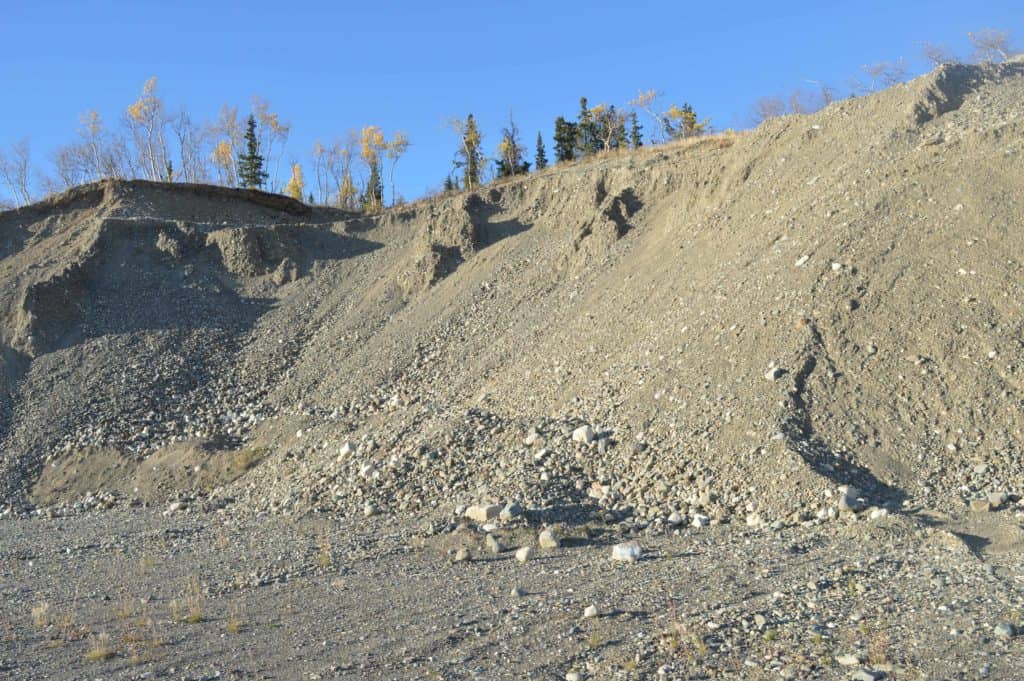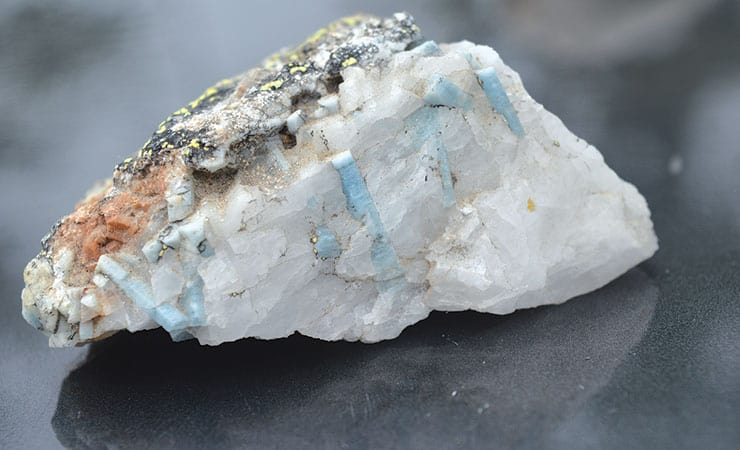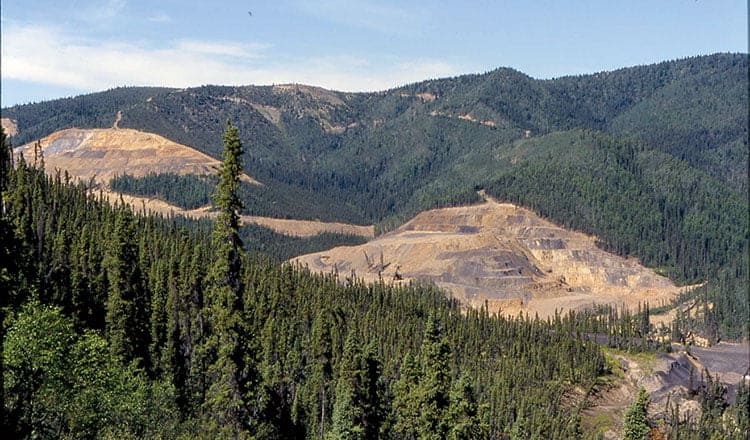They say a picture is worth a thousand words, but what about those physical objects you bring home from a trip? They must be worth at least a million.
When we can get back to travelling again those first trips should be truly special and memorable. People bring back all kinds of artisan objects to remind them of a special place they have visited, but I tend to collect rocks. You cannot go wrong, rocks are everywhere: beaches, trails, road cuts, even cities.
On any trip I try to collect at least one rock. You learn quickly to manage size and weight depending on whether you are on a camping road trip with a vehicle in the Yukon or on a long international trip trying to keep the weight down. Sometimes you may pick up a rock at the beginning of a trip and lug it around until you find some others. Usually I carry a bunch around until the final pack and then decide which one comes home.
Notice how children pick up rocks all the time; sometimes to throw, other times to put in their mouths, but mostly, just to look at. It is the uniqueness in every rock that is the attraction. It does not necessarily need to be something rare. It could just be the colour, shape or the circumstances that led you to pick it up.
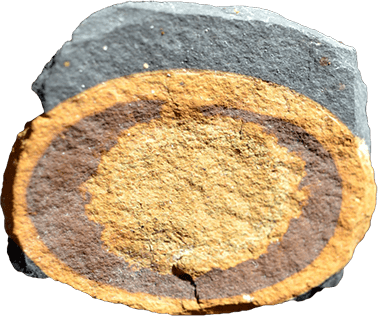 One of my favorite pieces is an elliptical three coloured rock a little bigger than a loonie. I call it “The Eye,” found north of Macmillan Pass near the Yukon/NWT border. It was a cloudless hot day in early July and I had just stopped at a small clear cold alpine creek to fill up my water bottle. It was looking up at me from the water, the brown iris and dark eyebrow setting it apart from all the other rocks in the creek. I look at it now and it brings me back to that day of blue sky, warm sun, and slopes covered in wildflowers.
One of my favorite pieces is an elliptical three coloured rock a little bigger than a loonie. I call it “The Eye,” found north of Macmillan Pass near the Yukon/NWT border. It was a cloudless hot day in early July and I had just stopped at a small clear cold alpine creek to fill up my water bottle. It was looking up at me from the water, the brown iris and dark eyebrow setting it apart from all the other rocks in the creek. I look at it now and it brings me back to that day of blue sky, warm sun, and slopes covered in wildflowers.
On a trip to Italy a few years ago, my partner and I found ourselves going for a random drive one dreadfully rainy day. We ended up in the Apuan Alps in northern Tuscany at the town of Carrara. We learned that this is the area the marble for the statue of Michelangelo’s David came from. In the mountains above Carrara are the quarries that have been mined since Roman days.
We drove up to those mountains on narrow switchbacks, into the clouds and through tunnels. We passed many quarries and found ourselves at a small abandoned rock dump. There were piles of various sized pieces of discarded marble some cut into slabs. With an umbrella in one hand we poked around for that perfect piece.
Not being familiar with the Carrara marbles at the time I did some research when I got home. This area has produced more marble than anywhere else in the world. You can find famous sculptures and buildings around the world made with this marble. The tallest office building in Canada, First Canadian Place in Toronto was originally clad in Carrara marble. The siding was replaced in 2007 with lightweight ceramic panels after a piece of the marble fell off and there were worries that more might come down.
In 1894 The New York Times declared Carrara as the stronghold of anarchism in Italy. A lot of the miners were ex-convicts or fugitives who had fled to this remote area to get away from authorities. Interesting facts I would not have known before coming across marble that rainy day.
Sometimes I research the geology of a place I am travelling to before I go.
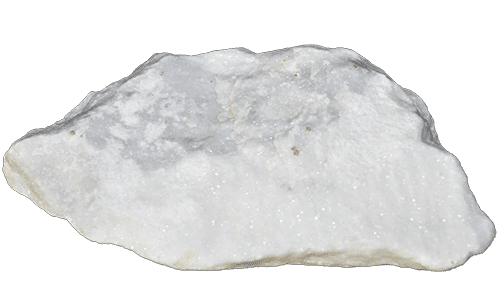 On a trip to Scotland a number of years ago I was prepared. The quest was for the intriguing sounding “Old Red Sandstone,” which I learned about in First Year geology. It was instrumental in the beginning of modern geological theories and a shift from the previous biblical views on the creation of Earth. In the late 1700’s, James Hutton, a Scottish geologist, used the Old Red Sandstone’s relation to older rocks to prove some of these new scientific theories.
On a trip to Scotland a number of years ago I was prepared. The quest was for the intriguing sounding “Old Red Sandstone,” which I learned about in First Year geology. It was instrumental in the beginning of modern geological theories and a shift from the previous biblical views on the creation of Earth. In the late 1700’s, James Hutton, a Scottish geologist, used the Old Red Sandstone’s relation to older rocks to prove some of these new scientific theories.
If that is not enough to excite you to seek the sandstone, there is also a book named “Whisky on the Rocks” from the British Geological Survey. It describes the geology of the water sources for each distillery in Scotland. Rocks impart different characteristics to the water which carries through into the taste of the whisky. It just so happens that my favorite Scotch whisky, Glenmorangie, has a water source in the Old Red Sandstone.
The obvious place to start the quest for the sandstone was the distillery, so I went directly there. Sadly it was closed to tours because of construction. While commiserating with a similarly disappointed German tourist in the parking lot I noticed from afar that the distillery buildings were constructed of the distinctive sandstone. The thick red walls help maintain steady temperatures while the whisky ages.
I ended up collecting a nice smooth piece of Old Red Sandstone off a rocky beach in the tiny village of Pennan on the coast. I had gone there because one of my favorite films, the 1983 treasure “Local Hero” was filmed in the village. It was not only great finding the red telephone box from the movie but Old Red itself. All those great memories rolled into one rock.
There are places you should not collect rocks from. At Territorial/Provincial and National Parks it is illegal to take rocks, vegetation, and other natural items. If you take rock or sand home from Hawaii you will suffer Pele’s Curse. Pele is the Hawaiian Goddess of Fire, creator of the islands. You will suffer bad luck until you return the rock.
You do not have to travel all over the world to collect your own memories, you can do it right at home. One of my favorite Yukon rocks is within reach of me right now.
I found it on the first night back to civilization after a beautiful three month stint in the Mackenzie Mountains, NWT. It is a grey piece of siltstone with white quartz veins I found under the suspension bridge at Ross River. It is wonderfully smooth, polished by the Pelly River. It has subtle indentations that fit perfectly into my hand. Rolling it around in your palm is soothing. I call it my stress rock. It still carries memories of that night in Ross River.
Some places are so special a photo just does not do it justice. Consider collecting a rock. Even the smallest of stones can trigger vivid recollections.

